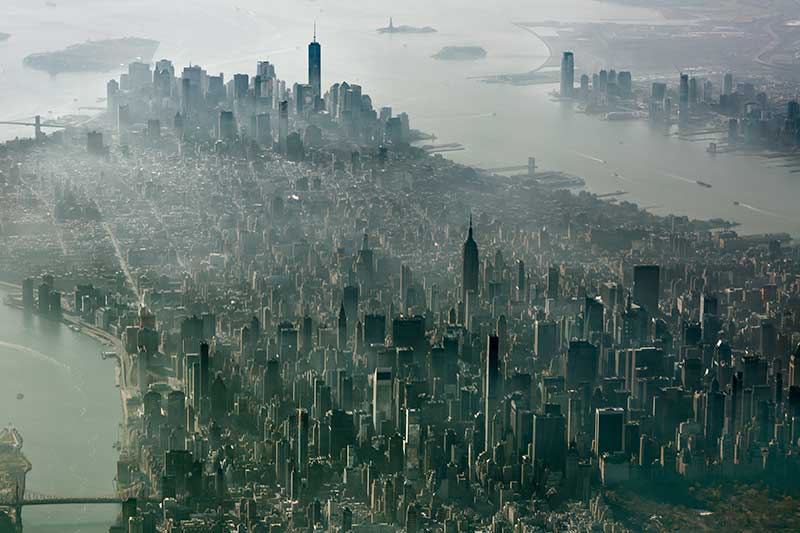Living Lab for Retrofitting Advanced Lighting and Shading Controls
Innovative lighting and shading solutions are applicable to virtually all commercial buildings. New York City alone has over one billion square feet of floor space, much of which must be retrofit in the next 15 years. The City has implemented aggressive energy codes and policies to support increased energy efficiency in buildings – e.g., new requirements to reduce lighting energy use in retrofit applications + mandatory benchmarking laws that disclose utility data, exerting pressure to decrease energy use. Hurricane Sandy focused attention on the importance of resiliency. On a societal scale, daylighting and shading solutions enable reduced daytime peak electric loads and offset the need for future peak generation capacity.

This project targeted 50%+ lighting and daylighting energy savings with other associated energy savings. By using a novel Living Lab approach, LBNL in partnership with two large building owners and the Building Energy Exchange (BEEx) explored design process and procurement challenges as well as technology integration challenges then derived lessons learned that could be shared by all, increasing the likelihood that the solutions can be implemented at scale.
In the U.S., over 50% of the commercial sector floor space is in larger buildings greater than 50,000 square feet, so solutions developed in this project have the potential to have broad sector-wide impact. Though this project was conducted in New York City, lessons learned are applicable to all large commercial properties nationwide. Many buildings experience similar technical and procedural challenges when trying to implement lighting and shading control retrofits. As the largest commercial market, New York City can play a key role in bringing advanced, innovative technologies to scale.

BEEx’s Let There be Daylight analysis indicates that at least 114 million square feet of New York City office space can easily accommodate the retrofit of comprehensive, advanced daylighting controls and that these retrofits could result in electric peak demand reduction of as much as 160 megawatts, and 340 gigawatt hours (GWh) of electricity savings. We estimate this would result in financial savings of over $70 million annually for New York City building owners and tenants.
Resources
Seminars, Education, and Training Events
BEEx Lighting the Future Exhibit: Press Release [Link], Content [PDF]
BEEx Professional Training (virtual courses available online May 2016) [Link]
Lighting Codes and Regulations
LED Lighting: Evaluation and Selection
Lighting Controls for Today's Lighting Upgrades
Lighting Retrofits: Strategies and Applications
Specifications: High-Resolution Controls for Dimmable LED Lighting
Complete annotated lighting controls specification [PDF]
Editable lighting controls specification [DOC]
Example zoning diagrams [PDF]
Specifications: Automated Motorized Shading for Daylighting and Solar Control
Shading controls specification [Link]
NYC Living Lab Final Report [PDF]
Lighting the Way_Building Energy Exchange [PDF]
Related Links
Building Energy Exchange: The Living Lab Demonstration Project
Daylighting The New York Times Headquarters: Post-Occupancy Results
DOE Commercial Buildings High Impact Technology Demonstrations
GSA Proving Ground Demonstrations
Project Team
Lawrence Berkeley National Laboratory
Building Energy Exchange
Steve Mesh, LC, IESNA, Lighting, Education, & Design
Sustainable Energy Partnerships
Project Partners
Industry Partners
Sponsors
New York State Energy Research and Development Authority (NYSERDA)



